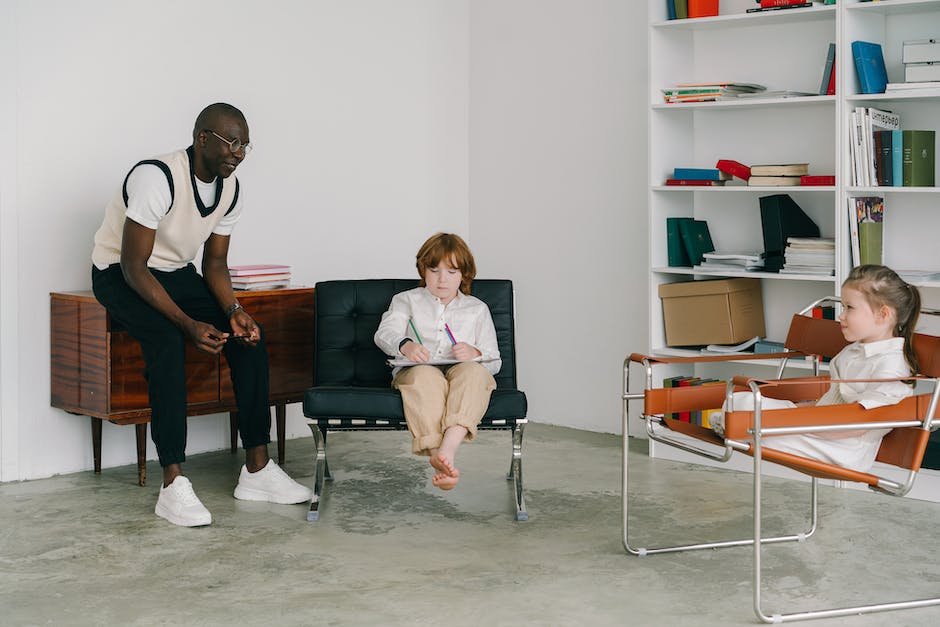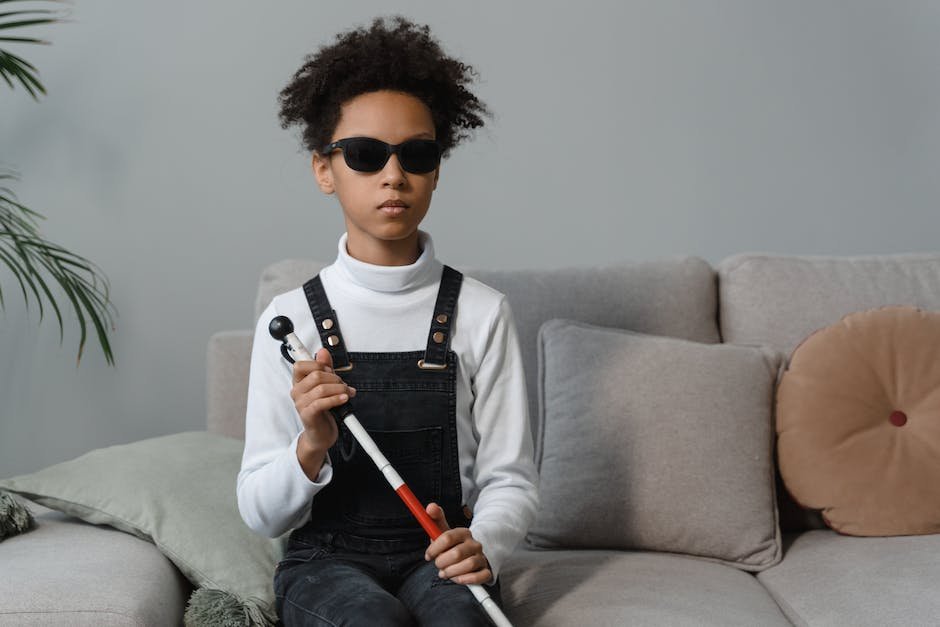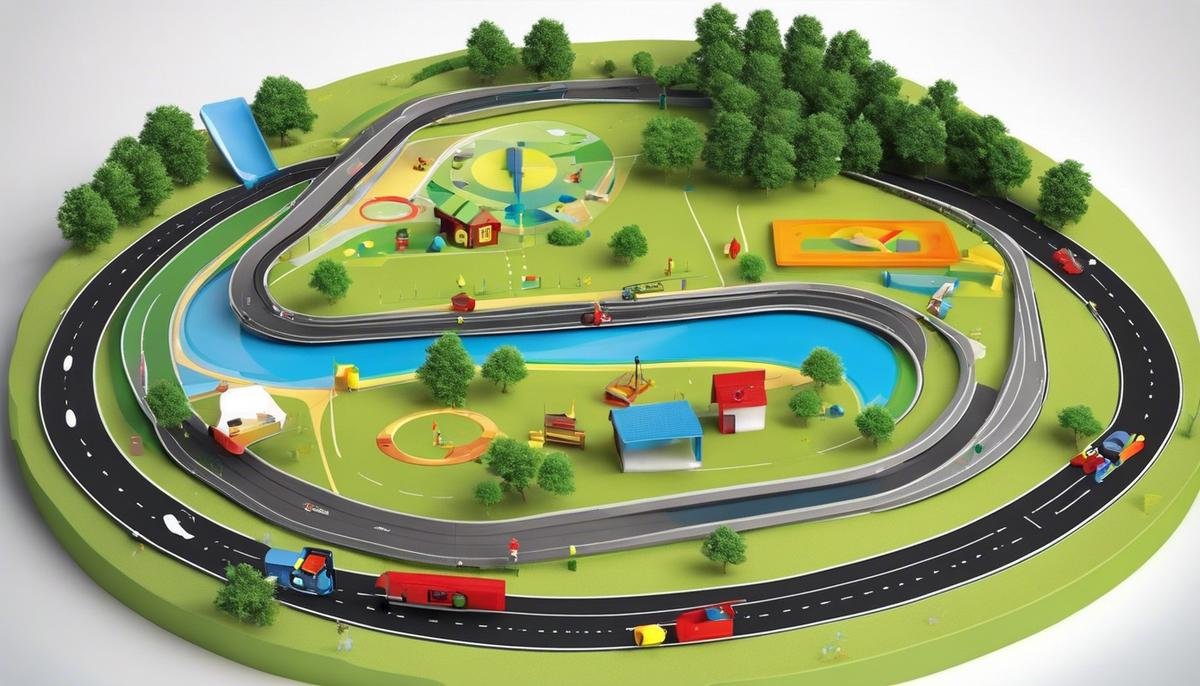
The enigma of Autism Spectrum Disorder emphasizes the need for specialized safety measures due to common behaviors like a proclivity towards wandering and difficulty in communication. Children with autism may also lack an instinctual sense of danger, further necessitating the adoption of measures aimed at their protection. Among these, incorporating tracking devices has emerged as a viable option. While these devices offer a gamut of advantages like fostering increased safety and delivering peace of mind to caregivers, they come with potential drawbacks, for instance, breaching privacy, fostering overdependency and possibly causing discomfort due to sensory sensitivities. This discussion delves into the world of autism tracking devices, presenting an honest review of their pros and cons, and takes a look into the different tech options available in the market.
Understanding Autism and Need for Safeguards
The Crucial Need for Special Safeguards – Including Tracking Devices – for Autistic Children
Raising children is an adventure filled with unexpected twists and turns every day– an adventure that suddenly takes a more challenging route when an autistic child is part of the family. Autism is a spectrum disorder that can impact social interaction, communication, interests, and behavior. This can pose unique safety risks that mandate the need for special safeguards. Utilizing tracking devices is one such safeguard that could make a world of difference.
Now, one might wonder why there is such a need for these specific safeguards for children with autism. The answer lies in the intricacies of this complex condition.
Firstly, many autistic children tend to wander away or bolt impulsively, often without understanding the potential dangers. In the blink of an eye, a quick grocery run turns into panic as a parent realizes their child has slipped away. This tendency tilts a balance of worry towards safety concerns in every conscious moment. That’s where tracking devices come in—offering real-time location information for those tear-inducing, heart-stopping moments, thereby giving immediate peace of mind.
Secondly, autistic children commonly crave routine and predictability. Changes in routines can confuse and upset them, possibly leading them to wander off in an attempt to regain their normalcy. Equipping them with a tracking device can provide both parents and child much-needed reassurance, continuity, and a sense of control in an uncontrollable situation.
It’s also crucial to remember that some autistic children are non-verbal or have limited verbal communication capabilities, making it difficult for them to seek help or explain their whereabouts when they’re lost. When traditional communication fails, a tracking device is ready to bridge that gap. This lifesaving technology allows parents to quickly locate their child and ensure their safety even when words can’t be their guide.
On the other hand, sensory sensitivities, a common characteristic of autism, can lead children to become overwhelmed or distressed in crowds or noisy environments. Sometimes, the only way they know how to cope is to escape the situation. In these instances, a tracking device proves essential. It can guide parents in the right direction, making a world of difference when every second matters.
As parents dedicated to our children, we must leverage available technology to ensure the safety and security of our kids. While these tracking devices are certainly not a one-size-fits-all solution, they have proven invaluable to many families with autistic children.
Keeping our precious ones safe is perhaps the single most important job we have as parents. The use of tracking devices for autistic children assists us in that endeavor, providing peace of mind and an added layer of security. In the end, isn’t that exactly what we’re all striving to achieve—a safe, happy environment where our children can thrive as best they can? After all, there’s no manual to child-raising, but there certainly can be safeguards. And this is a good place to start.

The Pros of Autism Tracking Devices
The world is beginning to understand more about autism, and thanks to technological advancements, we’re discovering better ways to support children and families dealing with this all-encompassing condition. Beyond understanding the behavior and managing the individual sensory sensitivities, tracking devices have proven to be game-changers. Here, we are delving into the benefits of utilizing these tiny pieces of technology.
One of the standout advantages of using tracking devices lies in its ability to foster independence for children with autism. Many children on the spectrum are vibrant and inquisitive, exhibiting a desire to explore – an aspect of their life that should not be hampered by safety concerns. Tracking devices help in instilling a sense of liberty, so children can continue to learn and grow while maintaining a level of safety. It helps them venture into their surroundings, knowing a safety net is always there.
Independence for the child also translates to a measure of freedom for parents, easing the constant need to hover or keep a direct eye on their child. Although the parent’s worry never ceases, tracking devices can help lessen this stress, knowing they can locate their child immediately if they wander off.
Moreover, tracking devices can prove beneficial in terms of gathering essential data about the child’s whereabouts. By analyzing this information, patterns may emerge, assisting parents and caregivers in comprehending the child’s tendencies and preferences. Appreciating where a child tends to wander can offer insights into the stimuli attracting them. This can subsequently contribute to more personalized strategies, tailored to suit the child’s unique personality and requirements, and ensure their safety.
Additionally, some tracking devices are equipped with customizable alert functionality. This means that if the child leaves a specific, predetermined ‘safe’ area, the device will instantly trigger an alert. This function not just enhances the safety but can also provide a blueprint for educating the child on danger zones.
These tracking devices for children with autism are usually lightweight, compact, and can be worn seamlessly, reducing the possibility of adverse sensory reactions. They are designed considering the specific needs of children, focusing on comfort and ease of use, ensuring they don’t become another source of sensory overwhelm.
Last but not least, these devices often include features that allow two-way communication. This can be lifesaving. For instance, if a non-verbal child gets lost and someone finds them, they can communicate with the parents through the device, thus making reunion swifter.
In conclusion, when it comes to supporting children with autism, technology has taken massive strides. These tracking devices have breathed life into the aphorism, ‘knowledge is power.’ With knowledge comes liberation, safety, peace, and a sense of community for families. They are paving the way for creating a world more accommodating and supportive for those with autism. It’s not about keeping an eye, it’s about keeping a heart, ensuring every child’s safety, while respecting their individual journeys of exploration and learning.

The Cons of Autism Tracking Devices
As much as tracking devices can play a key role in creating a secure environment for autistic children, a holistic perspective compels us to ponder the possible drawbacks and disadvantages that could come with their use. On the surface, it may seem like a clear cut, beneficial addition to family life but let’s delve into some areas to consider before making the decision.
One potential drawback could be the risk of fostering a sense of overdependence. The sense of security provided by a tracking device could inadvertently discourage an autistic child from developing critical life skills, such as awareness of their surroundings, or navigating in public spaces. It’s vital that while we implement safety measures, we simultaneously encourage and nurture their individual growth and self-reliance.
Ethical considerations also come to the forefront. The use of tracking devices could possibly infringe upon an autistic child’s privacy rights. As the child grows older, the notion of constantly being monitored might disrupt their sense of personal autonomy and independence. Respecting the rights and autonomy of children is a crucial aspect of parenting, even when aimed at assuring safety.
From a practical perspective, tracking devices are not foolproof. Technical malfunctions are possible. Locations may be inaccurately reported, batteries can run low, and in areas with poor cellular service – the device may not work at all. Consideration needs to be given to the potential for a false sense of security that might lead to relaxed vigilance in childcare.
Another aspect to consider is the potential for causing undue anxiety for both the parents and the child. Parents might find themselves in a constant state of alert, continually checking the device instead of fostering a peaceful and trusting environment at home. On the flip side, the child might carry the constant fear of losing the device, or it malfunctioning, adding an extra layer of worry to their daily lives.
Last but not least, children with autism often exhibit sensory sensitivities. Wearing a device all the time might be uncomfortable, causing irritation, unease, or distraction. While many devices are designed to be lightweight and compact, each child is unique, and what works for one might not work for another.
While tracking devices can provide real-time location information that could potentially be life-saving, and unquestionably provide peace of mind, it’s essential that these potential disadvantages are carefully weighed. Always remember, technology should serve as a tool to aid and enhance our lives, not dictate them. The safety of children is paramount, but in implementing protective measures, let’s also foster an environment that respects their individual growth, and nurtures their ability to navigate life self-confidently.

Tech Options: Reviewing Different Tracking Devices
Navigating the landscape of parenting a child with autism can often feel like a high-wire act with little room for deviations or missteps. In this light, the world of technology has introduced tracking devices that offer a safety net, if you will, for those situations where autism may challenge our child’s safety. However, it’s important to choose the right device that fits the child’s needs and lifestyle. Let’s delve into some of the best tracking devices available for children with autism.
1. AngelSense GPS Tracker:
One of the most popular trackers among parents of autistic children, AngelSense offers unique features like “listen in” and “2-way voice” which allow parents to hear their child’s environment or communicate directly with them.
2. Jiobit Location Tracker:
Jiobit is waterproof and tamper-proof, reassuring parents that the device will endure curious fingers and all types of weather. It offers real-time GPS tracking, downloadable history, customized safety zones, and proximity alerts.
3. Amazfit Bip Smartwatch:
This smartwatch includes GPS tracking and a long battery life, so the tracking won’t fail if you forget to charge it daily. It also monitors physical activity to give parents a sense of how active their child has been throughout the day.
4. Relay Kids Phone:
A screen-less device, the Relay cuts out the distractions of a smartphone but still provides a line of communication. It’s a GPS tracker that functions like a walkie-talkie, allowing your child to contact you with the push of a button.
5. Trax G+ GPS Tracker:
This device is known for its precision – it can locate the child to within 5 feet. The extensive battery life, geo-fences, and alert system also make it a reliable option.
Choosing the right tracker involves considering multiple aspects: the features of the device, ease of use, customer support, durability, and comfort of wear. Considering the sensory sensitivities of your child when picking a tracking device is pivotal, so opt for lightweight, compact, seamless designs that don’t overwhelm or irritate.
However, it’s important to remember that while these devices can considerable peace of mind and a sense of security, they aren’t foolproof. Technical glitches might occur, signals may drop, and batteries can run out. Furthermore, overdependence on tracking devices should be avoided.
Tracking devices should work alongside the development of safety skills in your child. Independence and self-reliance can be fostered alongside these measures, so devices should not replace educating your child about potential risks and safety measures.
There may also be ethical considerations and concern over infringement of privacy. As responsible parents, we must evaluate these considerations and make sure we are keeping our child’s best interests at the center of our choices.
While it is true that we may face an additional set of challenges when parenting a child with autism, family life can still be filled with joy and discovery as long as we remember our core purpose – fostering a loving, safe, and supportive environment where our child can thrive. Here’s hoping these recommendations can act as stepping stones on your family’s unique journey, creating a path that leads towards more freedom and peace of mind.

Balancing Safety and Autonomy
While tracking devices offer substantial support for families with autistic children, they are by no means a singular solution. A key component to ensure safety in conjunction with fostering autonomy in children with autism is the careful development of safety skills.
Regular teaching and reinforcement of safety skills is integral for children with autism. These skills can range from teaching children how to cross the road safely, understand warning signs to the importance of asking for help when it’s needed, and even how to dial emergency numbers. However, teaching these skills requires patience, repetition, and role-play to help them grasp and remember what they need to do.
As parents continually educate their children about safety measures, it’s crucial to provide ample opportunities for them to exercise these skills in real-life scenarios. Despite the ever-present fear of letting your child out of your sight, these invaluable lessons are stepping stones towards building their confidence and autonomy.
While using tracking devices, parents may breathe a sigh of relief as they get a sense of where their children are. However, reliance solely on these devices may stifle the child’s growth. One way to balance this is by setting boundaries within which a child can assert their independence. For example, allowing them specific routines, like a walk to the park or a trip to the community library, will help foster self-reliance while assuring parents of their safety.
In the process of promoting independence in your child, it’s important to realize they will make mistakes. Although every parent’s instinct is to shield their child from harm, some lessons are better when learned firsthand. It’s through these experiences children learn to navigate the world, understand their capacities, limitations, and grow.
Choosing the appropriate tracking device also plays a significant role. With options such as the AngelSense GPS Tracker, Jiobit Location Tracker, Amazfit Bip Smartwatch, Relay Kids Phone, and Trax G+ GPS Tracker, parents have an array of choices. Features to prioritize when selecting include durability, ease of use, comfort, customer support and the ability to send notifications when a child strays from a predetermined route or safe area.
However, as beneficial as these devices are, they come with limitations and ethical considerations. The potential infringement on a child’s privacy cannot be overlooked. Open conversations about why they need to wear a device can help them understand its purpose and aid in mitigating any feeling of invasion.
Moreover, technical malfunctions are a potential limitation, emphasizing why devices should be used in combination with reinforced safety skills and not complete dependence on technology. Lastly, some children might find wearing a device uncomfortable due to sensory sensitivities, which stresses the need for suitable design and ease of wear.
Ultimately, central to all these efforts in striking a balance between safety and fostering autonomy is loving and understanding your child’s unique needs, behaviors, and responses. By embracing their uniqueness and nurturing their individual growth, we can pave the way for an accommodating, supportive world that acknowledges and respects the needs and potentials of individuals with autism. Above all, parents’ unwavering love and dedication are what truly create a safe and happy environment for children with autism.

Choosing to use a tracking device for a child with autism remains a deeply personal and contextual decision. Like any tool, a tracking device can be beneficial, offering increased safety and peace of mind for caregivers. Yet, it’s crucial to consider potential cons such as privacy and overreliance issues. As we explore the spectrum of devices available in the market, it’s also key to bear in mind that the use of technology should be balanced with the efforts to develop personal independence and safety skills in children with autism. Indeed, autism tracking devices can provide valuable support, but the tool should be wielded with understanding and mindfulness, always with a view of fostering a sense of independence and autonomy in children.




